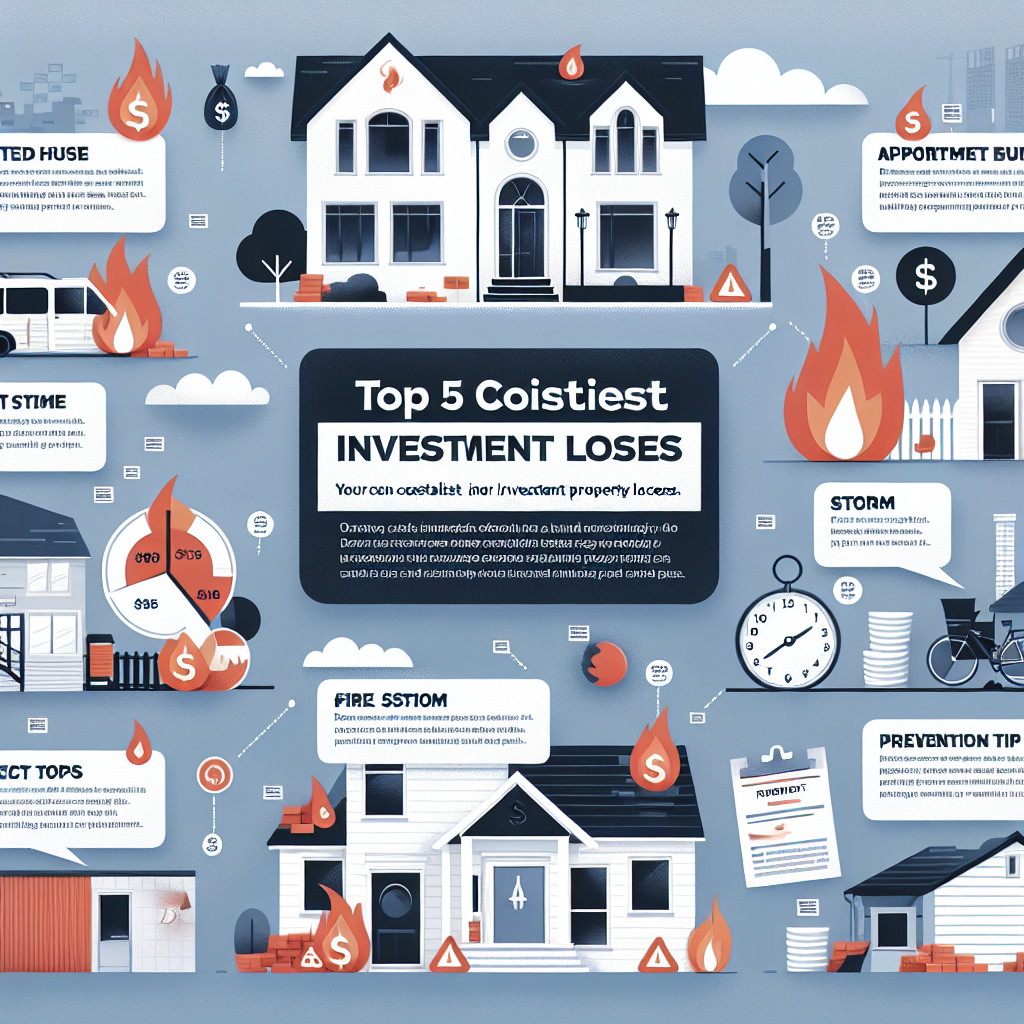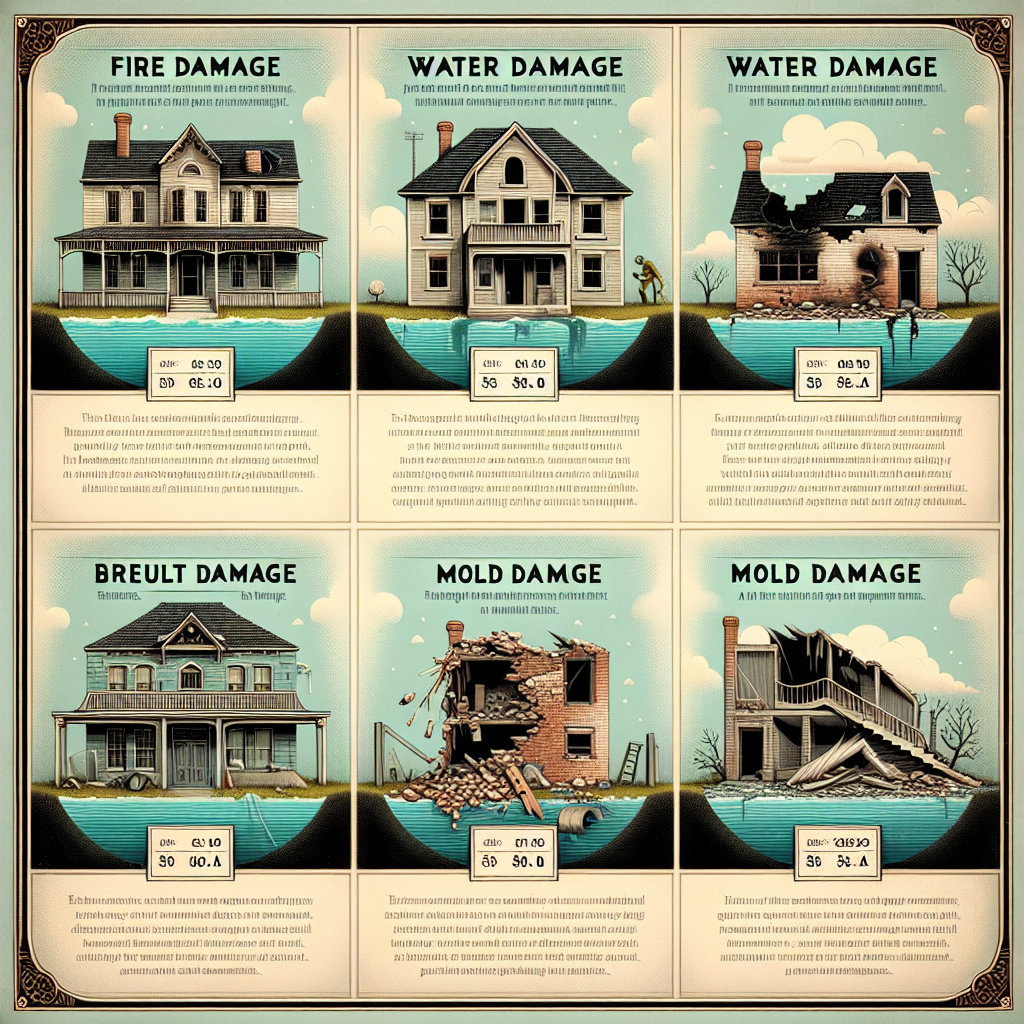-
Table of Contents
- Top 5 Costliest Investment Property Losses: Damage Estimates and Prevention Tips
- 1. Hurricanes and Tropical Storms
- Case Study: Hurricane Katrina
- Damage Estimates
- Prevention Tips
- 2. Earthquakes
- Case Study: 2011 Tōhoku Earthquake and Tsunami
- Damage Estimates
- Prevention Tips
- 3. Fires
- Case Study: California Wildfires
- Damage Estimates
- Prevention Tips
- 4. Flooding
- Case Study: 2017 Hurricane Harvey
- Damage Estimates
- Prevention Tips
- 5. Vandalism and Theft
- Case Study: Urban Vandalism in Major Cities
- Damage Estimates
- Prevention Tips
- Conclusion
Top 5 Costliest Investment Property Losses: Damage Estimates and Prevention Tips

Investing in property can be a lucrative venture, but it also comes with its own set of risks. Natural disasters, human errors, and unforeseen events can lead to significant financial losses. This article delves into the top five costliest investment property losses, providing damage estimates and valuable prevention tips to help property owners mitigate risks.
1. Hurricanes and Tropical Storms
Hurricanes and tropical storms are among the most devastating natural disasters that can affect investment properties. These powerful weather events can cause extensive damage to buildings, infrastructure, and landscapes.
Case Study: Hurricane Katrina
Hurricane Katrina, which struck the Gulf Coast in 2005, is one of the most infamous examples of hurricane damage. The storm caused an estimated $125 billion in damage, with a significant portion of that affecting residential and commercial properties.
Damage Estimates
- Structural damage to buildings
- Flooding and water damage
- Loss of rental income due to uninhabitable properties
- Cost of repairs and rebuilding
Prevention Tips
- Invest in properties located outside high-risk flood zones.
- Ensure buildings are constructed to withstand high winds and heavy rains.
- Purchase comprehensive insurance policies that cover hurricane damage.
- Implement regular maintenance checks to identify and fix vulnerabilities.
2. Earthquakes
Earthquakes can cause catastrophic damage to investment properties, particularly in regions with high seismic activity. The sudden and unpredictable nature of earthquakes makes them a significant risk for property owners.
Case Study: 2011 Tōhoku Earthquake and Tsunami
The 2011 Tōhoku earthquake and subsequent tsunami in Japan resulted in an estimated $235 billion in damage. The disaster affected thousands of buildings, including residential and commercial properties.
Damage Estimates
- Structural collapse and severe damage to buildings
- Fires caused by ruptured gas lines
- Loss of rental income due to uninhabitable properties
- Cost of repairs and rebuilding
Prevention Tips
- Invest in properties built to modern seismic standards.
- Conduct regular structural assessments and retrofitting.
- Purchase earthquake insurance policies.
- Develop and implement emergency response plans.
3. Fires
Fires can cause extensive damage to investment properties, leading to significant financial losses. Whether caused by natural events, human error, or equipment failure, fires pose a serious threat to property owners.
Case Study: California Wildfires
The California wildfires of 2018 caused an estimated $24 billion in damage, with thousands of homes and commercial properties destroyed or severely damaged.
Damage Estimates
- Complete destruction of buildings
- Smoke and water damage
- Loss of rental income due to uninhabitable properties
- Cost of repairs and rebuilding
Prevention Tips
- Install fire-resistant building materials and systems.
- Implement regular fire safety inspections and maintenance.
- Purchase comprehensive fire insurance policies.
- Develop and practice fire evacuation plans.
4. Flooding
Flooding is a common and costly natural disaster that can affect investment properties. Heavy rains, storm surges, and overflowing rivers can lead to significant water damage.
Case Study: 2017 Hurricane Harvey
Hurricane Harvey, which struck Texas in 2017, caused an estimated $125 billion in damage, with widespread flooding affecting thousands of properties.
Damage Estimates
- Water damage to buildings and infrastructure
- Mold and mildew growth
- Loss of rental income due to uninhabitable properties
- Cost of repairs and rebuilding
Prevention Tips
- Invest in properties located outside high-risk flood zones.
- Implement proper drainage systems and flood barriers.
- Purchase flood insurance policies.
- Conduct regular maintenance checks to identify and fix vulnerabilities.
5. Vandalism and Theft
Vandalism and theft can lead to significant financial losses for property owners. These crimes can result in property damage, loss of valuable items, and increased insurance premiums.
Case Study: Urban Vandalism in Major Cities
In major cities like New York and Los Angeles, vandalism and theft are common issues that affect investment properties. The cost of repairing damage and replacing stolen items can be substantial.
Damage Estimates
- Damage to buildings and infrastructure
- Loss of valuable items and equipment
- Increased insurance premiums
- Cost of repairs and security enhancements
Prevention Tips
- Install security systems, including cameras and alarms.
- Implement regular security patrols and inspections.
- Purchase comprehensive insurance policies that cover vandalism and theft.
- Engage with local law enforcement and community watch programs.
Conclusion
Investment properties can be highly profitable, but they also come with significant risks. Hurricanes, earthquakes, fires, flooding, and vandalism are among the top causes of costly property losses. By understanding these risks and implementing effective prevention strategies, property owners can protect their investments and minimize financial losses. Investing in proper insurance coverage, conducting regular maintenance, and staying informed about potential hazards are crucial steps in safeguarding investment properties.
In summary, the key takeaways for property owners are:
- Understand the specific risks associated with your property’s location.
- Invest in comprehensive insurance policies that cover a wide range of potential damages.
- Implement regular maintenance and safety checks to identify and address vulnerabilities.
- Develop and practice emergency response plans to ensure preparedness.
By taking these proactive measures, property owners can significantly reduce the likelihood of experiencing costly investment property losses and ensure the long-term success of their investments.








